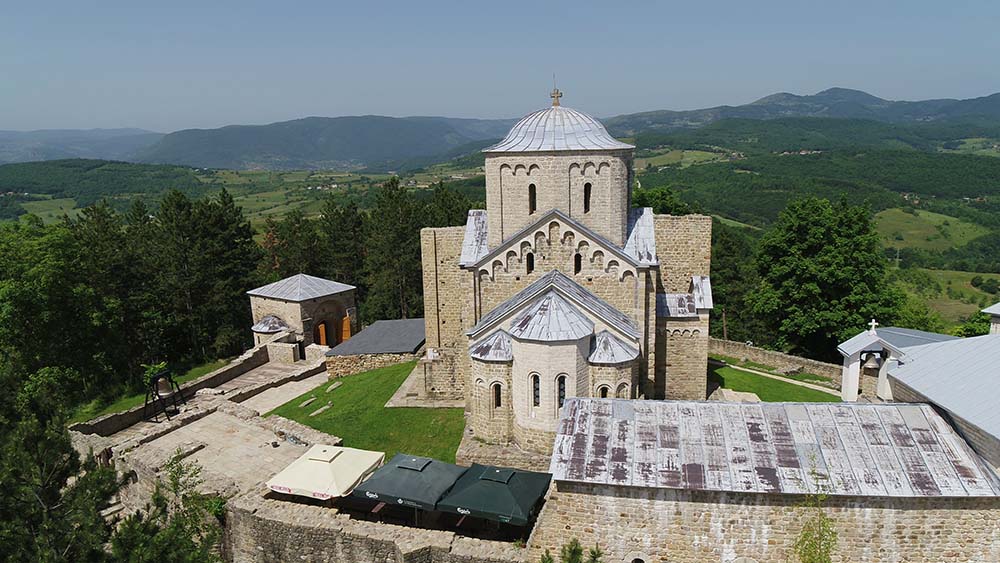Đurđevi Stupovi Monastery
The Đurđevi Stupovi Monastery is located on top of a hill offering a panoramic view of Novi Pazar. It is the
12th-century endowment of the Grand Župan [prince] Stefan Nemanja who, according to popular tradition, built
it in gratitude to St George for saving him from the cave where he was imprisoned by his brothers. The
monastery church is a single-nave building with a dome and characteristic towers – stupovi [columns], after
which the monastery was named. It occupies a special place in the history of Serbian architecture, being the
first monument of the Raška School, based on a synthesis of Byzantine and Romanesque architectural styles.
Evidence of the monastery’s significance is the fact that it was the burial site of King Dragutin, the
second ktitor, who had the church enlarged and its narthex painted. Most of the frescoes have not been
preserved and following the end of the Second World War parts thereof were transferred to the National
Museum in Belgrade. The monastery suffered greatly during the Austrian-Turkish wars at the end of the 17th
century and in the wars of the 20th century. In 1979, the monument was inscribed on the UNESCO World
Heritage List as part of the Old Ras and Sopoćani monumental whole.
